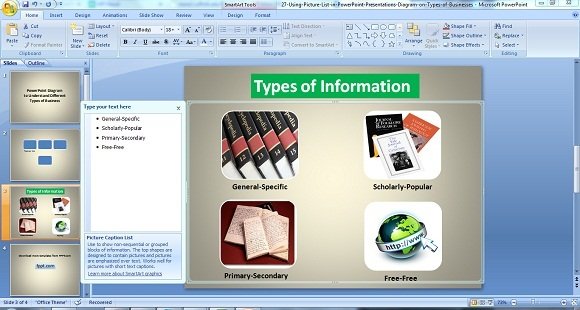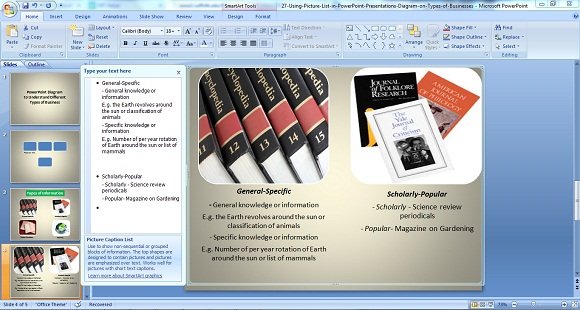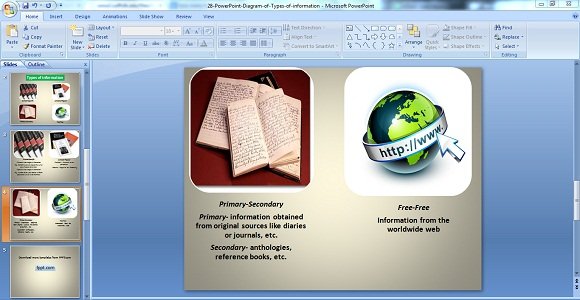Using Different Types Of Sources Of Information For Your Business
Did you know that you can gain business inspiration from vast sources of information? Yes, you will never run out of great business ideas and inspiration and have this “aha” moment perhaps. After reading a memoir of a highly successful entrepreneur, the rags-to-riches story or a billionaire or simple a spark of an idea after reading a magazine on gardening or cooking. Indeed, you can get ideas everywhere you turn your eyes to, wherever you look around. However, you need to know the basics and that includes knowing and understanding the type of information and where it comes from. Yet, to better organize your thoughts and your PowerPoint presentation, you can use different SmartArt graphics.
Types Of Information
Information is classified into four groups based on where it comes from. And you can present these classification using SmartArt graphics like the Picture List if you want to highlight the images or pictures or other SmartArt graphics, if you want to show more text rather than graphics. But for the presentation of this topic, Picture List was used, (as shown below).

Information Can Be Classified According To:
- General – specific
- Scholarly – popular
- Primary – secondary
- Free – free
How Having Accurate Information Will Help Your Business

The general-specific classification involves general information or information that everybody knows, while specific information is the accurate or as the term implies, ‘specific’ information. Applying the general-specific information when analyzing your business will help you arrive to a sound decision later on. For example, if you are an entrepreneur selling garments or clothing for a specific season, then knowing the different seasons will help you determine the types of clothes you will want to produce. Your knowledge about the seasons is an example of a general information, yet knowing the specific information will lead you to refer to encyclopedias and other references that will tell you when each season starts. This way, it will help you plan ahead for your business strategies.
The scholarly-popular information,on the other hand is information from specialized journals or publications and popular publications like magazines. Hence, if you want to know more about business management and strategies, then look for reference books or business journals about it. You can also gain inspiration from magazines about business yet since it is a magazine, the approach is different than those of reference books. Needless to say, scholarly information involves data from previous researches or established theories on business while information from magazines will have a lifestyle angle to appeal to human interests.

The third type is the primary-secondary and examples of information sources for primary are diaries, journals, direct interviews, audio and video recordings, etc. The secondary sources are excerpts from an interview written by another person like anthologies, biographies and books of non-fiction and many others.
Lastly, free-free classification is the information taken from the worldwide web. However, you should be wary on such kind of information since everybody could write something and post it anytime. Hence, the information may not be accurate or the source may not be reliable. To ensure that you are getting the right information, choose verifiable or trusted sources for your business plans and even for your PowerPoint presentations.
